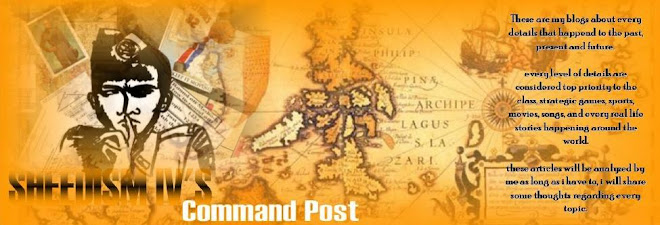 Ferdinand Magellan (Portuguese: Fernão de Magalhães,
Ferdinand Magellan (Portuguese: Fernão de Magalhães,Spanish: Fernando or Hernando de Magallanes); (Spring 1480 – April 27, 1521, Mactan Island, Cebu, Philippines) was a Portuguese maritime explorer who, while in the service of the Spanish crown, tried to find a westward route to the Spice Islands of Indonesia. This was the first known successful attempt to circumnavigate the Earth.
He did not complete his final westward voyage; he was killed during the Battle of Mactan in the Philippines. As he died farther west than the Spice Islands, which he had visited on earlier voyages from the west, he became one of the first individuals to cross all the meridians of the globe.
He was the first person to lead an expedition sailing westward from Europe to Asia and to cross the Pacific Ocean.
Magellan should also be recognized as the first European explorer to enter the Pacific from the Strait of Magellan, which he discovered. He is also remembered as the first European to reach the archipelago of what is now known as the Philippines, which was unknown to the western world before his landing. Arab traders had established commerce within the archipelago centuries earlier.
Of the 240 crew members who set out with Magellan to circumnavigate the earth, only 18 completed the circumnavigation of the globe and managed to return to Spain in 1522.
They were led by Spaniard Juan Sebastián Elcano, who took over command of the expedition after Magellan's death. 17 other men arrived later in Spain, 12 men captured by the Portugueses in Cape Verde some weeks later, and in 1525/1526 5 survivors of the Trinidad.
His Voyage and discoveries
He was the first person to lead an expedition sailing westward from Europe to Asia and to cross the Pacific Ocean.
Magellan should also be recognized as the first European explorer to enter the Pacific from the Strait of Magellan, which he discovered. He is also remembered as the first European to reach the archipelago of what is now known as the Philippines, which was unknown to the western world before his landing. Arab traders had established commerce within the archipelago centuries earlier.
Of the 240 crew members who set out with Magellan to circumnavigate the earth, only 18 completed the circumnavigation of the globe and managed to return to Spain in 1522.
They were led by Spaniard Juan Sebastián Elcano, who took over command of the expedition after Magellan's death. 17 other men arrived later in Spain, 12 men captured by the Portugueses in Cape Verde some weeks later, and in 1525/1526 5 survivors of the Trinidad.
His Voyage and discoveries
 The aim of Christopher Columbus' voyage to the West was to reach the coasts of the Spice Islands (or the Indies) and to establish commercial relations between Spain and the several Asian kingdoms.
The aim of Christopher Columbus' voyage to the West was to reach the coasts of the Spice Islands (or the Indies) and to establish commercial relations between Spain and the several Asian kingdoms. The Spanish soon realized after Columbus' voyages that the lands of the Americas were not a part of Asia, but a new continent. Once Vasco da Gama and the Portuguese arrived in India in 1498, it became urgent for Spain to find a new commercial route to Asia.
The Treaty of Tordesillas reserved for Portugal the routes that went around Africa. The Spanish Crown then decided to send out exploration voyages in order to find a way to Asia by travelling westwards. Vasco Núñez de Balboa sailed the Pacific Ocean in 1513, and Juan Díaz de Solís died in Río de la Plata some years later trying to find a passage in South America.
When Magellan arrived at the Court of Spain, he presented King Charles V with a plan which would bring the ships of the Crown of Castile full access to the lands of the Spice Islands, after seeing that plan not approved by the Portuguese king, Manuel I.
On August 10, 1519, five ships under Magellan's command – Trinidad, San Antonio, Concepción, Victoria, and Santiago – left Seville and travelled from the Guadalquivir River to Sanlúcar de Barrameda at the mouth of the river, where they remained more than five weeks.
Spanish authorities were wary of the Portuguese Magellan, almost prevented the admiral from sailing, and switched his crew from mostly Portuguese men to men of Spain. Nevertheless, Magellan set sail from Sanlúcar de Barrameda with about 270 men on September 20. King Manuel ordered a Portuguese naval detachment to pursue Magellan, but Magellan avoided them.
After stopping at the Canary Islands, Magellan arrived at Cape Verde, where he set course for Cape St. Augustine in Brazil. On November 27, the expedition crossed the equator; on December 6, the crew sighted South America.
Since Brazil was Portuguese territory, Magellan avoided it, and on December 13 anchored near present-day Rio de Janeiro. There the crew was resupplied, but bad conditions caused them to delay. Afterwards, they continued to sail south along South America's east coast, looking for the strait that Magellan believed would lead to the Spice Islands. The fleet reached Río de la Plata on January 10, 1520.
On March 30, the crew established a settlement that they called Puerto San Julian. On April 2, a mutiny involving two of the five ship captains broke out, but it was unsuccessful because the crew remained loyal. Sebastian del Cano was one of those who were forgiven.
Antonio Pigafetta, an Italian from Vicenza who paid to be on the Magellan voyage, related that Gaspar Quesada, the captain of Concepcion, was executed; Juan de Cartagena, the captain of San Antonio, and a priest named Padre Sanchez de la Reina were instead marooned on the coast.
Another account states that Luis de Mendoza, the captain of Victoria, was executed along with Quesada.
Reportedly those killed were drawn and quartered and impaled on the coast; years later, their bones were found by Sir Francis Drake.
The journey resumed. The Santiago was sent down the coast on a scouting expedition and was wrecked in a sudden storm. All of its crew survived and made it safely to shore.
Two of them returned overland to inform Magellan of what had happened, and bring rescue to their comrades. After this experience, Magellan decided to wait for a few weeks more before again resuming the voyage.
At 52°S latitude on October 21, the fleet reached Cape Virgenes and concluded they had found the passage, because the waters were brine and deep inland.
Four ships began an arduous trip through the 373-mile (600 km) long passage that Magellan called the Estrecho (Canal) de Todos los Santos, ("All Saints' Channel"), because the fleet travelled through it on November 1, or All Saints' Day. The strait is now named the Strait of Magellan. Magellan first assigned Concepcion and San Antonio to explore the strait, but the latter, commanded by Gomez, deserted and returned to Spain on November 20.
On November 28, the three remaining ships entered the South Pacific. Magellan named the waters the Mar Pacifico (Pacific Ocean) because of its apparent stillness.
Magellan was the first European to reach Tierra del Fuego just east of the Pacific side of the strait.


Heading northwest, the crew reached the equator on February 13, 1521. On March 6, they reached the Marianas and Guam.
Magellan called Guam the "Island of Sails" because they saw a lot of sailboats. They renamed it to "Ladrones Island" (Island of Thieves) because many of Trinidad's small boats were stolen there. On March 16, Magellan reached the island of Homonhon in the Philippines, with 150 crew left, and became the first European to reach the Philippines.
Magellan was able to communicate with the native peoples because his Malay interpreter, Enrique, could understand their language.
Enrique was indentured by Magellan in 1511 right after the sacking of Malacca (See: European colonization of Melaka), and was at his side during the battles in Africa, during Magellan's disgrace at the King's court in Portugal, and during Magellan's successful raising of a fleet.
Rajah Humabon of Cebu was friendly to Magellan, and he and his queen, Juana, even accepted Christianity. Afterward, Humabon and his rival Datu Zula convinced Magellan to go kill their enemy, Lapu-Lapu, on Mactan.

Magellan had wished to convert Lapu-Lapu to Christianity, as he had Rajah Humabon, a proposal to which Lapu-Lapu was dismissive.
On the morning of April 17, 1521, Magellan sailed to Mactan with an army of men. During the resulting Battle of Mactan against indigenous forces led by Lapu-Lapu, Magellan was killed.
Pigafetta and Ginés de Mafra provided the only extant eyewitness accounts of the events culminating in Magellan's death:
"When morning came, forty-nine of us leaped into the water up to our thighs, and walked through water for more than two cross-bow flights before we could reach the shore.
The boats could not approach nearer because of certain rocks in the water. The other eleven men remained behind to guard the boats. When we reached land, [the natives] had formed in three divisions to the number of more than one thousand five hundred people.
When they saw us, they charged down upon us with exceeding loud cries... The musketeers and crossbow-men shot from a distance for about a half-hour, but uselessly... Recognizing the captain, so many turned upon him that they knocked his helmet off his head twice... A native hurled a bamboo spear into the captain's face, but the latter immediately killed him with his lance, which he left in the native's body. Then, trying to lay hand on sword, he could draw it out but halfway, because he had been wounded in the arm with a bamboo spear.
When the natives saw that, they all hurled themselves upon him. One of them wounded him on the left leg with a large cutlass, which resembles a scimitar, only being larger. That caused the captain to fall face downward, when immediately they rushed upon him with iron and bamboo spears and with their cutlasses, until they killed our mirror, our light, our comfort, and our true guide.
When they wounded him, he turned back many times to see whether we were all in the boats. Thereupon, beholding him dead, we, wounded, retreated, as best we could, to the boats, which were already pulling off."
Magellan provided in his will that Enrique, his interpreter, was to be freed upon his death. However, after Mactan, the remaining ships' masters refused to free Enrique.
Enrique escaped his indenture on May 1, with the aid of Rajah Humabon, amid the deaths of almost 30 crewmen.
However, Pigafetta had been jotting down words the Bisayan language, both Butuanon and Cebuano--which he started at Mazaua on Friday, March 29 and grew to a total of 145 words--and was apparently able to continue communications during the rest of the voyage.
The Spaniards offered the natives with merchandises in exchange for Magellan's body, but they were declined and his body was never recovered.







No comments:
Post a Comment